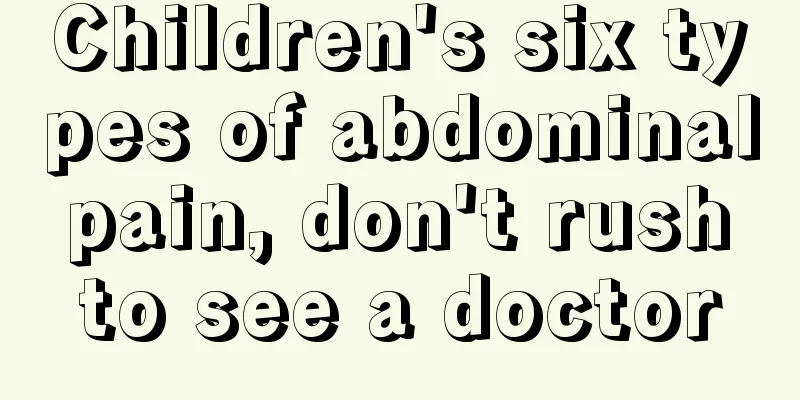What are the symptoms of spina bifida in babies?

|
Newborns are very fragile after birth, so there are many neonatal diseases, including spina bifida, which is a congenital disease. If a child is found to have spina bifida, he should be treated in time. It has many symptoms. The most common one is lower limb paralysis and incontinence. Let's take a look at this aspect. What are the symptoms of spina bifida in babies? The symptoms of spina bifida occulta are mainly caused by damage to the spinal cord and spinal nerves in the affected segments, which is related to whether there is compression and the degree of nerve damage. This is consistent with a series of secondary pathological changes caused by spina bifida and the gradual aggravation of ischemic changes in the spinal cord. According to its clinical symptoms, there are mild, moderate and severe cases, but a considerable number of patients with spina bifida do not develop symptoms throughout their lives. Symptoms at the onset of mild illness include weak lower limbs, mild muscle atrophy, numbness, and enuresis, sometimes manifested as low back pain or leg pain. Most of the time, one lower limb is affected, but there are also cases where muscle weakness occurs in both lower limbs at the same time. Occult spina bifida is very common. Only the spinal canal is defective, and the spinal cord itself is normal. Therefore, there are no neurological symptoms and no impact on health. 20-25% of normal people have spina bifida. Some patients often have some abnormal phenomena on the skin of the defect, such as a tuft of hair, small depression, vascular nevus, pigmentation, thickening of subcutaneous fat, etc. There may also be congenital cysts or lipomas on the defect. The more common symptoms of spina bifida occulta in children include lower limb paralysis and incontinence. The clinical symptoms vary greatly. Mild cases may be asymptomatic or accompanied by bedwetting, memory loss, and inability to sit for long periods of time. In more serious cases, lower back pain, leg pain, and weak legs often occur. It is also accompanied by spontaneous sweating, night sweats, decreased spleen and stomach function, and may even affect the reproductive system, causing sexual dysfunction and infertility. If the lesion is in the lumbar sacral region, there will be spastic paralysis and muscle atrophy of the lower limbs, and disappearance of sensation and tendon reflexes. What is spina bifida occulta Spina bifida (spina bifida) is a congenital malformation that occurs during the embryonic period. Spina bifida occulta is the most common type of occult spinal dysraphism, which is often seen in the lumbar sacral region. The vertebral lamina of one or more vertebrae are not fully closed, and there is no bulging of the spinal canal contents. The vast majority of cases of spina bifida occulta produce no symptoms or external manifestations throughout life. Occult spina bifida is the most common type of occult spinal dysraphism. A few cases of occult spina bifida may cause low back pain, mild urinary incontinence and enuresis. Patients with symptoms of neurological damage often have local skin changes accompanied by intraspinal dermoid cysts. For patients with tethered cord syndrome caused by spina bifida, surgery is suitable, and it is recommended to give surgical treatment as early as possible. Children are usually given basic anesthesia plus local anesthesia, and some are given general anesthesia with endotracheal intubation. Adults use enhanced anesthesia plus local anesthesia, or epidural anesthesia. Regardless of whether the lesion is in the cervical, thoracic, or lumbar segment, a supraspinal straight incision is used to facilitate the expansion of the laminectomy above and below the spina bifida lesion segment. After the operation, the patient should lie prone or side-lying for one week. If there is obvious urinary incontinence, catheterization should be performed to keep the surgical site clean and hygienic. Young children should be strictly protected from contamination by urine and feces, and antibiotics should be used as appropriate to prevent infection. After the stitches are removed, rehabilitation treatment can be added, such as physical therapy, acupuncture, massage, and limb function exercises, and neurotrophic drugs can be used to promote the early recovery of nerve function. |
<<: Newborn baby's head is big
>>: What are the symptoms of high lead levels in children?
Recommend
How to prevent and treat astigmatism in children
Astigmatism is a relatively common vision disease...
Reasons why babies always stick out their tongues
The physical health of the baby is an issue that ...
What to do if your child has high jaundice
People at different stages may have different phy...
When should infants drink glucose?
Babies are the ones we need to protect, so we sho...
What to do if your child falls and gets a bump on his forehead
When children are just learning to walk, they wil...
Diet therapy for babies with colds and coughs
As the saying goes, "All medicines are poiso...
Sleep myoclonus in children
Sleep myoclonus in children is a type of epilepsy...
What is the disease when white spots appear on children’s skin?
If we were to say which skin disease is considere...
What are the early symptoms of hypothyroidism in seven-year-old children?
Everyone knows about the disease called hypothyro...
What are the symptoms of poor brain development?
Clinicians now recommend that women go to the hos...
What to do if your baby coughs while sleeping
Baby cold and cough is a common disease. Sometime...
What to eat when your baby has a fever
In the eyes of many parents, a child’s fever is t...
Can eight-month-old babies eat beef?
At the age of eight months, diet is very importan...
Can my baby take a bath if he has a cold and a runny nose? The approach must be correct
When babies have a cold and a runny nose, many pa...
What medicine is effective for children with frequent urination
In today's society, there are not many childr...









